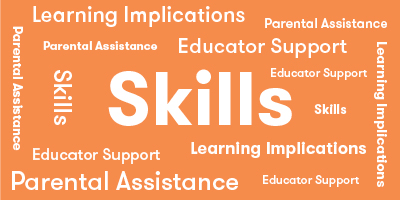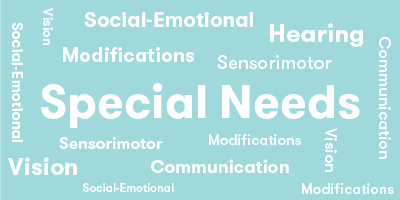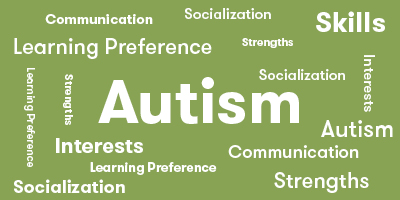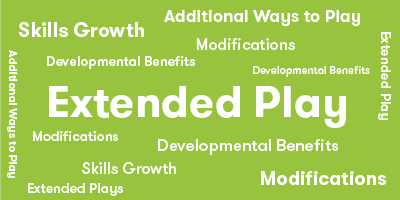






Collapsible content
Today, we’re going to roll dice and build towers as we learn to play SimplyFun’s Raise the Roofs.
You can play Raise the Roofs with 2 to 4 players, ages 8 and up.
Raise the Roofs is good for developing strategy skills, as players choose whether to build new towers, add height to existing towers, or remove blocks from opponent’s towers.
Raise the Roofs also improves Problem Solving skills. Players decide what actions to take, based upon their dice rolls and what other players are building.
Separate the building blocks by color and place them in the center play area. 2 player games use 10 blocks per color. 3 player games use 13 blocks per color, and 4 player games use 16 blocks per color.
Stack all the bonus blocks and place them to the side. They will be awarded at the end of the game.
Place the five dice near the center play area.
Players roll different dice combinations to build towers in one or more of the four colors to ear bonus blocks. When the game ends, each player combines their constructed towers, including any earned bonus blocks, into a single tower. The player with the tallest combined tower wins!
Each die has the same six symbols. On your turn, use these symbols to complete one or more of the following actions: build, add, remove, or take blocks.
The dice rolls can be paired in multiple ways, but each add-a-block or remove-a-block symbol may only be paired with one color symbol.
Each tower can only be built with blocks of the same color. You may have multiple towers using the same color.
Each new tower must be built separately with two or more blocks and cannot be combined with another matching-color tower within your building area.
You may not add individual blocks from the center play area or take blocks from an opponent until you have at least one matching-color tower in your building area.
The removing or taking actions may result in towers containing only one block in a player's building area, or the removal of a tower all together.
Note: Try to maintain towers of three of more blocks because only these will count toward your final tower at the end of the game.
Play begins with the starting player rolling all five dice. After your first roll, you may choose to reroll any or all the dice up to two more times, totaling a maximum of three dice rolls per turn.
Each die may only be used once. Any dice that cannot be used to complete an action are set aside and not used this turn.
BUILDING BRAND NEW TOWERS
By pairing two or more dice symbols of one color, you may build a new tower in that color with blocks from the center play area. Each new tower is built separately within your building area using the same number of blocks as you have matching dice symbols. You can only build these towers if there are sufficient matching-color blocks available in the center play area.
ADDING INDIVIDUAL BLOCKS FROM THE CENTER PLAY AREA ONTO YOUR TOWERS
By pairing one color symbol with one add-a-block symbol, you may add one block from the center play area to one of your matching-color towers. You can only add a block to a tower if there are sufficient matching-color blocks available in the center play area.
REMOVING BLOCKS FROM OPPONENTS' TOWERS AND
RETURNING THEM TO THE CENTER PLAY AREA
By pairing one color symbol with one remove-a-block symbol, you may force another player to choose one of their matching-color towers to remove a block from, which is then placed back in the center play area.
TAKING BLOCKS FROM OPPONENTS' TOWERS AND STACKING THEM ON YOUR TOWERS
By pairing one color symbol with one remove-a-block symbol and one add-a-block symbol, you may force another player to choose one of their matching-color towers to remove a block from, which is then stacked on top of one of your matching-color tower.
The game ends when there are only four or fewer building blocks left in the center play area at the end of a player’s turn. All players then compare their towers to determine which towers earn bonus blocks and who wins after combining their towers by following these steps:
Towers containing only one or two blocks are not eligible for bonus blocks and are not used when building the combined tower. Remove these towers from your building area.
The tallest tower in each of the four colors earns two bonus blocks. If multiple towers are tied for the tallest tower in a color, then each of the towers involved in the tie receives one bonus block, no matter who owns the towers.
All players combine their remaining towers, including any earned bonus blocks, into one single tower. The tallest combined tower wins! In the case of a tie, the player with the most bonus blocks is the winner.


Not available for this product


Determine
What Does Child Do To Use Skill In The Game?
Players need to decide which is the best option from the available choices based on the dice they rolled and the towers of all the players.
How Parents Can Assist Learning
To help children develop patience and precision, encourage them to look closely at the dice and examine all the towers of other players to determine which, if any, dice to reroll.
Learning Implications and Educator Support
To help children develop patience and precision, encourage them to look closely at the dice and examine all the towers of other players to determine which, if any, dice to reroll.
Educators can also work with children to determine whether to try building their towers or removing blocks from other player's towers. Ask the child to talk about the advantages or disadvantages of either option. Questions could include "How will another player react if you take a tower block from them?" or "Does another player have a taller tower of the same color as you?"
Compare
What Does Child Do To Use Skill In The Game?
Players compare the color and height of their towers to the towers of other players.
How Parents Can Assist Learning
To help children develop patience and precision, encourage them to look closely at the dice and examine all the towers of other players to determine which, if any, dice to reroll.
Young children may be inclined to act impulsively. Encourage children to think about what might happen with another roll, such as getting a color they need or an "R" so they can remove a block from another player.
Learning Implications and Educator Support
To help children develop patience and precision, encourage them to look closely at the dice and examine all the towers of other players to determine which, if any, dice to reroll.
Educators can also work with children on determining whether to try building their towers or removing blocks from other player's towers. Ask the child to talk about the advantages or disadvantages of either option. Questions could include "How will another player react if you take a tower block from them?" or "Does another player have a taller tower of the same color as you?"
Predict
What Does Child Do To Use Skill In The Game?
There is some predicting involved playing Raise the Roofs as players consider which dice to keep and which to reroll based on the probability that they will roll colors or letters they want. Additionally, players may predict which colors the other players are trying to build into the tallest towers.
How Parents Can Assist Learning
Playing Raise the Roofs requires analyzing the odds of rolling a desired combination of dice (ex: one blue, one "R" and one "A") and whether rerolling is worth the risk of not getting the desired combination and therefore being unable to collect or remove a tower block on your turn.
Depending on the dice rolls, there is additional risk-reward analysis in deciding whether to take a tower block from the play area or an opponent. All of this risk-reward analysis and choice-making is driven by making hypotheses and predictions, which is essential to strategic thinking.
Learning Implications and Educator Support
Predicting involves skills like analysis, observation, empathy and interpretation. Also, children need to learn how to change perspective, imagining being their opponent, in order to have optimal predicting skills. Educators can prompt children to practice predicting by asking them to think about what the opponent will do on their next turn.
Playing Raise the Roofs requires analyzing the odds of rolling a desired combination of dice (ex: one blue, one "R" and one "A") and whether rerolling is worth the risk of not getting the desired combination and therefore being unable to collect or remove a tower block on your turn.
Depending on the dice rolls, there is additional risk-reward analysis in deciding whether to take a tower block from the play area or an opponent. All of this risk-reward analysis and choice-making is driven by making hypotheses and predictions, which is essential to strategic thinking.
Experiment
What Does Child Do To Use Skill In The Game?
Players can try out different strategies, namely, seeking to build fewer, taller towers or more, shorter towers.
How Parents Can Assist Learning
Discuss different strategies prior to starting the game and encourage the child to select one. Play the game and discuss. Then, play again with the child trying a different strategy. Discuss again and compare the advantages and disadvantages. Once children understand different strategies, they can shift and adapt strategies within a game.
Learning Implications and Educator Support
Discuss different strategies prior to starting the game and encourage the child to select one. Play the game and discuss. Then, play again with the child trying a different strategy. Discuss again and compare the advantages and disadvantages. Once children understand different strategies, they can shift and adapt strategies within a game.
Solve
What Does Child Do To Use Skill In The Game?
Players adapt their strategies and choices based on how other players are creating and building towers, and removing the tower blocks of other players.
How Parents Can Assist Learning
If needed, encourage children to "Stop, Look and Think". This can help reduce impulsive moves and increase reasoning and logical approach to solving the game.
Learning Implications and Educator Support
As children respond to the moves of other players, they are building creative problem-solving, focus, self-control, adaptability and resilience skills.
If needed, encourage children to "Stop, Look and Think". This can help reduce impulsive moves and increase reasoning and logical approach to solving the game.
*Data compiled from CCSSI ELA Standards, WA Science Standards, and Washington Social Studies Standards


Cognitive
Suggestions for How to Modify Play Experience
Raise the Roofs is good for matching and teaching height comparisons. To make it easier, allow children to add to their same color towers without needing to use the A side of the die, instead of building a new tower.
When first learning the game, disregard the A and R dice sides. Once players understand the basics, include the A side, and once that is understood, include the R dice. It is easier for the child to understand matching colors than the letters and the rules associated with them. By starting with just the colors, players can have early success to build motivation and knowledge for the more challenging aspects of the game.
Allow players to start a tower with one block instead of a minimum of two. This will enable a player to gain success early in the game.
Communication
Suggestions for How to Modify Play Experience
Not much language is needed to play Raise the Roofs. Players only need to understand add, remove and highest/tallest.
Sensorimotor
Suggestions for How to Modify Play Experience
Stacking requires some fine motor skills, which may be difficult for some children with motor issues. However, if players can manipulate small stacking blocks, they should be able to play Raise the Roofs.
Use a cup for rolling the dice if players have difficulty rolling multiple dice with their hands.
Social Emotional/Behavioral
Suggestions for How to Modify Play Experience
Play with a partner. This will increase cooperative problem solving and provide a model for good sportsmanship. Having a partner also encourages less impulsive play, enabling players to stop, think, and discuss play options.
The Remove Block from another player element may be irritating for children with low frustration tolerance. In other words, having someone take a block off of one of their towers may be upsetting. When first learning the game, disregard the R side of the dice. Once the child gains confidence, then start playing with the R side of the dice. Support the child by encouraging the child to "Try to take the block back or throw the dice to gain more blocks."
Vision
Suggestions for How to Modify Play Experience
The Add and Remove sides are hard to see for people with low vision. Disregard if needed.
Use a black marker to make a larger A and R. Also outline the yellow side of the dice in black as well.
Hearing
Suggestions for How to Modify Play Experience
Children who are deaf or hard of hearing should be able to play Raise the Roofs. Little communication is needed.
*Data compiled from CCSSI ELA Standards, WA Science Standards, and Washington Social Studies Standards


Autism Strengths & Interests
Short Summary of Strengths & Interests
- Strategic thinking
- Probability
- Problem Solving
Is good at matching visual items
Is This Game Appropriate? Yes
Description
Players need to match colored dice to blocks to build towers.
Has a good memory for sensory details, including visual, touch, taste and smell
This game is not appropriate
Has a good memory for words, phrases and dialouge
This game is not appropriate
Has a good memory for pictures, numbers and patterns
This game is not appropriate
Likes to put things in order or a sequence
Is This Game Appropriate? Yes
Description
Players need to build towers, with the tallest towers of each color earning bonus blocks. All of a players towers are then combined into one tower, and the player with the tallest final tower wins. This means players are constantly building towers and comparing the sizes of their own and others towers. Ability to sequence sizes is needed to do this comparison. Children who are good at making visual comparisons may do well with Raise the Roofs.
Learns through visualizing or "replaying" actions in their mind
Is This Game Appropriate? Yes
Description
Players may be able to use the ability to recall previous dice throws and decisions to inform their current and future turns.
Likes activities with rules, such as math and phonics
This game is not appropriate
Is very concrete and literal
Is This Game Appropriate? Yes
Description
Raise the Roofs enables children to use concrete objects for comparison and decision-making. The use of blocks and colored dice makes playing very visual.
Learns in small "chunks" (for example, phone numbers are 3 chunks of number xxx-xxx-xxxx that are combined together)
This game is not appropriate
Is good at nonverbal reasoning and logic
Is This Game Appropriate? Yes
Description
Raise the Roofs does not require a lot of communication. Players use nonverbal reasoning to compare their towers with those of other players. This comparison allows a player to make decisions about their next moves, including where to add a block to their own towers and where to remove blocks from others' towers.
Likes spatial problem solving
Is This Game Appropriate? Yes
Description
Players compare heights of towers to make decisions about what to do on a given turn. They also compare tower heights to earn bonus blocks and determine the final winner.
Can read well with good vocabulary, though may not fully comprehend content
This game is not appropriate
Likes to use and has good fine motor skill
Is This Game Appropriate? Yes
Description
Fine motor skills are needs for constructing the towers and, to a lesser extent, controlling the throw of the dice.
Likes established routines or set ways of doing things
This game is not appropriate
Likes manipulating, constructing or building things
Is This Game Appropriate? Yes
Description
The basis of the game is constructing towers. If children enjoy playing with blocks or building toys, they will likely find Raise the Roofs to be a fun, engaging game.
Likes to use and has good musical abilities
This game is not appropriate
Likes to use and has good drawing skills
This game is not appropriate
Autism Special Considerations
Appears to ignore other's communication and/or has difficulty giving eye contact to a communication partner
Is This Game Appropriate for Child with Characteristic? Yes
Can Child with Characteristic Play Game w/o Modification? Yes
Strategies for Developing Compensatory Skills:
Players do not need to give direct eye contact to play the game, but they do need to pay attention to other players' towers and compare them to their own.
Has difficulty understanding complex verbal directions
Is This Game Appropriate for Child with Characteristic? No
Can Child with Characteristic Play Game w/o Modification? No
Strategies for Developing Compensatory Skills:
The directions relating to starting a tower, adding, and removing blocks may be confusing, even with demonstration.
Uses vocabulary inaccurately or demonstrates echolalia (repeating another's speech)
Is This Game Appropriate for Child with Characteristic? Yes
Can Child with Characteristic Play Game w/o Modification? No
Strategies for Developing Compensatory Skills:
Encourage players to comment on what they are doing as they make a play. That may help some children repeat things that are relevant to the game.
Gets stuck repeating a verbal topic or physical actions and/or has difficulty attending to others' actions or topic.
Is This Game Appropriate for Child with Characteristic? No
Can Child with Characteristic Play Game w/o Modification? No
Strategies for Developing Compensatory Skills:
Players need to pay attention to other players moves to be able to win. If they understand the game and winning is not an issue for the child, they may still enjoy the game.
Has difficulty producing speech/communication
Is This Game Appropriate for Child with Characteristic? Yes
Can Child with Characteristic Play Game w/o Modification? Yes
Strategies for Developing Compensatory Skills:
The game can be played without communication, but players should be encouraged to comment on their moves.
Has difficulty sequencing multi-step actions and/or doing complex abstract tasks
Is This Game Appropriate for Child with Characteristic? No
Can Child with Characteristic Play Game w/o Modification? No
Strategies for Developing Compensatory Skills:
Players need to throw dice, select dice, perhaps throw again and build a tower. This sequence may be too complicated for some children.
Demonstrates difficulty initiating and maintaining social interactions
Is This Game Appropriate for Child with Characteristic? Yes
Can Child with Characteristic Play Game w/o Modification? Yes
Strategies for Developing Compensatory Skills:
Social interactions, other than turn-taking, is not needed but should be encouraged.
Acts out or demonstrates avoidance behaviors when frustrated, overwhelmed, or needs more sensory input.
Is This Game Appropriate for Child with Characteristic? Yes
Can Child with Characteristic Play Game w/o Modification? No
Strategies for Developing Compensatory Skills:
Modify the game to reduce potential frustration. Disregard the "R" side of the dice because having someone take a block off of one of the child's towers may cause anger or frustration.
Has short attention span for non-preferred activities
Is This Game Appropriate for Child with Characteristic? No
Can Child with Characteristic Play Game w/o Modification? No
Strategies for Developing Compensatory Skills:
Unless the child is interested in construction or likes dice games, Raise the Roofs may not be a good match.
Needs sameness or consistent routines and/or has difficulty with transitions from one activity to another
Is This Game Appropriate for Child with Characteristic? No
Can Child with Characteristic Play Game w/o Modification? No
Strategies for Developing Compensatory Skills:
Has difficulty understanding others' feelings, intentions, and the reasons for others' actions.
Is This Game Appropriate for Child with Characteristic? No
Can Child with Characteristic Play Game w/o Modification? No
Strategies for Developing Compensatory Skills:
Players need to pay attention to other players towers and moves to understand what they are trying to build and be able to play defensively. This may be too difficult for some children.
*Data compiled from CCSSI ELA Standards, WA Science Standards, and Washington Social Studies Standards


Extra Ways to Play the Game
Add miniature cars and action figures. Let children construct a city from the tower blocks and act out stories.
Materials Needed
Miniature cars, people, trees, etc. Add paper or cardboard to make streets.
Developmental Benefits
Dramatic play enables children to use their imagination and creativity to develop characters, actions, and a story narrative. This is important for later literacy development.
Extra Ways to Play the Game
Modify the game to enable another way to earn a bonus block. For example, if you throw five dice of any color you earn a bonus block to put on a tower of choice.
Materials Needed
No additional materials needed.
Developmental Benefits
This modification will add another element of risk and reward to the game. Additionally, it will provide more strategic thinking opportunities. For example, players may change their strategy to try to get five of the same color.
Extra Ways to Play the Game
The R side of the dice (for Remove a block) may be too frustrating or too difficult for younger players. Change the meaning of the R to roll again. When the R comes up, the player gets to roll that one die again.
Materials Needed
No additional materials needed.
Developmental Benefits
By changing the meaning of the R, younger children or children with a limited frustration tolerance can play with more success.
*Data compiled from CCSSI ELA Standards, WA Science Standards, and Washington Social Studies Standards
Game Details
- 64 Building Blocks (16 blocks per color)
- 12 Bonus Blocks
- 5 Dice
- 1 Rules Booklet
- Choosing a selection results in a full page refresh.
- Opens in a new window.








